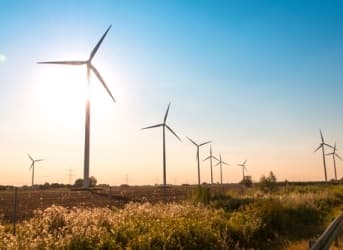On March 12, 2014, India and the United States renewed talks regarding cooperation on clean energy. The talks concluded positively with memorandums of understanding for the two countries to cooperate on research and development, more extensive use of environmentally friendly technologies, and greater coordination on scientific development.
The dialogue between the two countries included six working groups on areas such as coal, oil and gas, sustainable development, new technologies and renewable energies, and power and energy efficiency. The objective goal of the talks is to increase business-to-business cooperation, expand trade, and create a better regulatory framework. The talks follow the Partnership to Advance Clean Energy (PACE) established in 2009.
It is a positive development that the United States (and many others) is paying attention to India’s energy needs. With a growing middle class and a population of 1.27 billion people, 50 percent of whom are under age 25, India is expected to have some of the fastest growing energy needs that are certain to dramatically impact the global economy and its energy market. With this in mind, here are 5 key things to know about energy in India.
Related Article: By Embracing Renewable Energy Indonesia Avoids Offshore Disputes
1. Coal production remains key to energy mix
India produced 557 million tonnes (metric tons) of coal in 2012-13, and India’s rapidly growing power industry consumed the majority of it. Coal production has steadily increased since the industry was nationalized in the 1970s. The trend is likely to continue, with production goals aiming for an increase to 795 million tonnes by 2016-2017.
Owing to summer heat, frequent labor strikes, and natural disasters, India has had a harder time meeting growing market demands and faces the likelihood of growing coal imports. Coal remains an essential staple to India’s energy needs and will remain so for the foreseeable future.
2. Fourth largest consumer of oil and petroleum in the world
A trend almost certain to accelerate as the country faces growing urbanization and an expanding middle class, India has a high dependence on imports for its petroleum needs and is the world’s fourth largest importer of crude oil. Most imports come from the Middle East, but growing investments in South America, the Caspian Sea, and elsewhere look to diversify and potentially increase oil to India.
The oil industry has slowly but steadily opened up since major reforms were enacted in 1991. Subsequent reforms are ongoing. Two state-owned companies, Oil India Limited (OIL) and Oil and Natural Gas Corporation (ONGC), have long dominated the production and refining in the sector. However, reforms in the last decade have increased competition and exhibit potential signs of growing foreign investment in a sector long dominated by domestic players.
3. Relies on imports to meet growing demand for gas
Perhaps more so than other areas in the energy sector, attempts to meet demand with gas have been greatly influenced by geopolitical issues. Various plans for pipelines with Myanmar, Iran and Pakistan, and Turkmenistan and Afghanistan have fallen apart over border disputes and other issues.
Domestic natural gas production has fallen in recent years, with further drop-offs expected in 2014-15. Given the growing demand and reliance on natural gas for power, issues with obtaining natural gas from other countries, and its own falling production, satisfying natural gas needs is one of India’s the most urgent challenges.
4. Electricity shortages hurt industrial output
India meets its electricity demands with 65 percent use of non-renewables, 19 percent of that demand is met with hydropower, 12 percent from renewables, and 2 percent from nuclear power.
Demand is far outpacing supply in meeting the rapidly growing electricity needs of the country. Electricity shortages have resulted in loss of profits for many companies, loss in productivity as plants and businesses have been forced to shut down for a few days a month or slow down manufacturing, and added operational costs as some businesses have been forced to pay for power back up units.
Related Article: Earth’s Infrared Radiation: New Renewable Energy Frontier?
While growing demand is part of the problem, poor infrastructure equally contributes to electricity shortfalls that have hindered recovery in India’s industrial sector and hurt its overall economic growth.
ADVERTISEMENT
5. Energy poverty and inequality spreads
Access to energy is a tremendous problem in India and major inequalities of access plague the subcontinent. According to one census, 77 million households in India still use kerosene for lighting. The problem is even more acute in rural India where up to 44 percent of households lack access to electricity.
While India has undertaken various programs and initiatives to address energy poverty, they have been faced with logistical problems and inadequate implementation locally. In the case of rural villages, access issues and geographical hindrances make addressing the issue extremely costly and difficult.
India faces exploding demand and insufficient supply. As the country’s population and needs continue to grow rapidly, it will also need major reforms in infrastructure and efficiency.
While many analysts point to developing solar and nuclear capabilities as essential, India will need greater capacity and efficiency in all sectors to meet India’s energy needs. How and if India chooses to confront this pressing problem will have ramifications for the country and the world. Starting a dialogue and drawing greater attention are a good start.
By Sean Durns


















